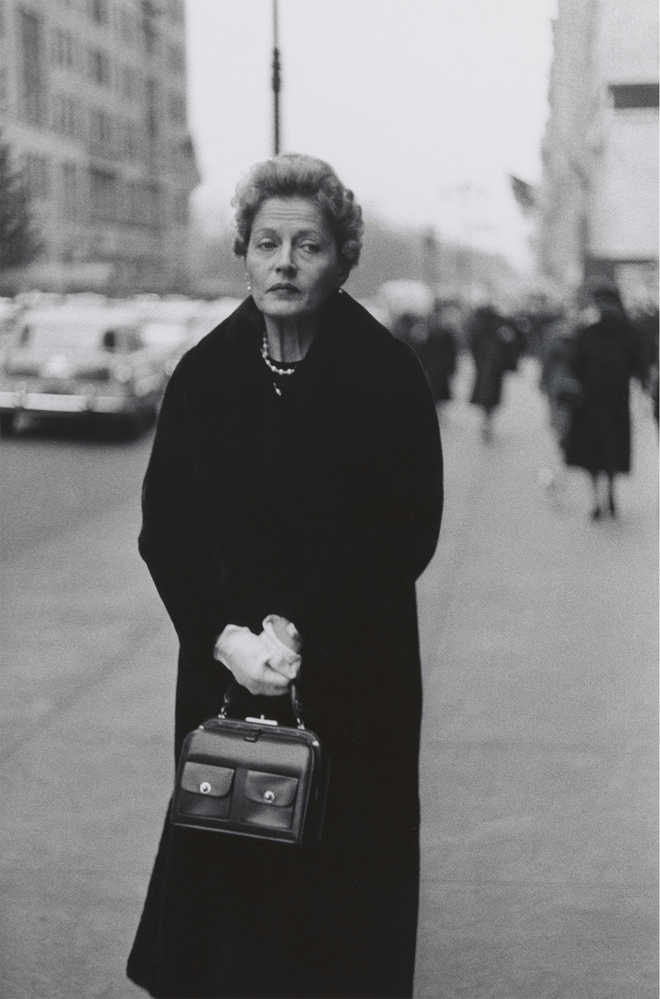Rachael Revesz
A James Dean waxwork in Coney Island in the 1950s is shiny and white through the glass; an elderly woman with a neat perm frowns as she clutches her pocketbook on Fifth Avenue; a “woman impersonator” looks comically tragic as he applies lipstick in the mirror.
Diane Arbus’ early photographs are now on display at the Met Breuer in new York and capture the full “freakdom” of NYC after the Second World War.
Although the fire-eater might be gone from the Brooklyn palisades and the “backwards man” might not be as novel a concept as he once was, modern New Yorkers can all identify with those ghost-like shapes we pass on the streets, people with their own stories to tell but whom we will never get to know.
Maybe that is what so fascinating about Diane Arbus — we hardly know the photograher herself as she struggled with bouts of depression and took her own life at the age of 48.
“What I’m trying to describe is that it’s impossible to get out of your skin into somebody else’s,” she once wrote. “And that’s what all this is a little bit about. That somebody else’s tragedy is not the same as your own.”
The expression of the boy who steps off the curb and onto the street — young and wide-eyed — gives us not only a snapshot of his life amid the frenzy and transience of the New York City streets but also of the artist behind the frame.
Unlike her contemporaries, such as Walker Evans or Helen Levitt, who actively used to hide their cameras when taking photos so as not to distract their subjects, Arbus would seek a moment of eye contact or engagement with the people she photographed.
She was famously drawn to so-called “deviants” — prostitutes, pimps, strippers, dancers, gang members, Russian “midgets” and “female impersonators”.
“Freaks was a thing I photographed a lot. It was one of the first things I photographed and it had a terrific kind of excitement for me,” she wrote.
“Most people go through life dreading they’ll have a traumatic experience. For freaks, they were born with their trauma. They’ve already passed their test in life. They’re aristocrats.”
Arbus’ apparent lack of sympathy in describing marginalised communities as “things” is remarkable given the fact that she made friendships with many of these people, from the “hard core lesbians” in Washington Square to the toothless, transgender prostitute whose birthday party in Harlem she was invited to.
The photographer, who married her high school sweetheart at the age of 18 and lived and died in the West Village, described the mix of excitement and dread when she went out to take pictures of people, as if she was going on a “blind date”. That feeling resonates in the photographs, as if she and most of her subjects are wary, checking each other out, and totally vulnerable.
Most people we encounter are strangers. Yet in a city of millions of people, Arbus wanted to make her photographs “specific”. “There are an awful lot of people in the world so it’s going to be terribly hard to photograph all of them, so if I photograph some kind of generalised human being, everybody’ll recognise it,” she wrote.
The authority of displaying the “Common Man” is what draws the viewer closer to the photograph, peering in as if there is more there than first meets the eye.
What did that elderly woman in pearls whisper to her companion at the ball? What is going through the mind of that girl with the thick fringe who is looking up at the skyline?
It may be a land of “freaks”, but within those pictures, even 70 years later, most New Yorkers will see a piece of themselves.
— The Independent
Unlock Exclusive Insights with The Tribune Premium
Take your experience further with Premium access.
Thought-provoking Opinions, Expert Analysis, In-depth Insights and other Member Only Benefits
Already a Member? Sign In Now










